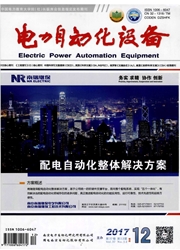

 中文摘要:
中文摘要:
传统斜坡补偿方式可以有效抑制峰值电流模式,控制Boost功率因数校正(PFC)变换器系统的次谐波振荡不稳定现象,但是同时会造成电流过零处的死区问题,从而引起较大的被控平均电流畸变和功率因数恶化问题。对此提出一种动态斜坡补偿控制新思路,有效改善斜坡补偿方式存在的电流畸变问题,同时能确保对次谐波振荡的抑制。基于系统输入输出的准稳态关系导出了所提动态斜坡补偿的控制方程,其相应实现电路简单可行。进一步分析了被控平均电流的谐波畸变特性,给出了斜坡补偿方式和所提动态斜坡补偿方式下平均输入电流的谐波分解结果,从理论角度说明了所提控制的改进补偿效果。仿真结果与理论结果基本相吻合.所得的实验结果很好地证实了所提动态斜坡补偿控制的可行性,也证实了理论分析结论的正确性。
 英文摘要:
英文摘要:
SC(SIop Compensation) is an effective way to suppress the sub-harmonic oscillation of Boost PFC(Power Factor Correction) converter in PCM(Peak Control Mode),but it also induces larger distortion of theaverage current to be controlled due to the dead-zone near zero crossing point and worsens the power factorquality,for which,DSC(Dynamic Slope Compensation) is proposed to improve the current distortion whilesuppress the sub-harmonic oscillation. The control equation of the proposed DSC scheme is derived basedon the quasi steady-state relation between system input and output,which is easy to implement. Theharmonic distortion of the average current to be controlled is analyzed ,the results of harmonic decompositionfor the average current to be controlled with SC and DSC are respectively given,and the effect of powerfactor improvement by the proposed scheme is theoretically explained. Simulative results are consistent withthe theoretical analysis and the experimental results validate the feasibility of DSC and the correctness oftheoretical analysis.
 同期刊论文项目
同期刊论文项目
 同项目期刊论文
同项目期刊论文
 期刊信息
期刊信息
